Preface: The following text is a brief excerpt from the first of two thick volumes that Prof. Hans-Adolf Jacobsen devoted to Karl Haushofer. The labor to accomplish this in order to re-explore the works of Karl Haushofer from every angle, including his correspondence, is still immense. May this modest contribution serve as the basis for the student who wants to embark upon a reading of Haushofer’s works, in a neo-Eurasianist perspective, and especially to analyze all his articles published in his “Zeitschrift für Geopolitik”.
Haushofer was born in 1869 into a well established family in Bavarian territory. The archives remind us that the name has appeared since 1352, designating a peasant family originating in the locality of Haushofen. The maternal ancestors came from Frisian country in the North of Germany. Orphaned by his mother very early in his life, the young Haushofer would be raised by his maternal grandparents in the Chiemsee region of Bavaria. Grandfather Fraas was a professor of veterinary medicine in Munich. Mentioning his happy childhood much later, Haushofer took care to remember that class differences were non-existent in Bavaria: children from every background played together, so class arrogance was non-existent: his liveliness and proverbial gentility were the fruits of this baroque conviviality: his initiatives would bear the mark of this character trait. Haushofer was destined for a military career very early on, which he embarked upon in 1887 in the 1st Field Artillery Regiment of the Bavarian Royal Army.
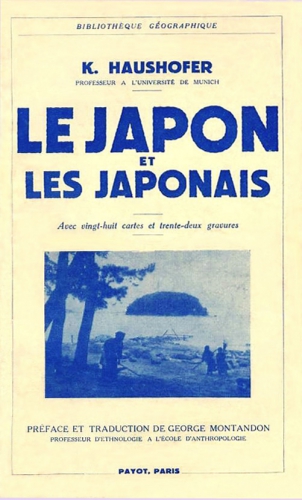 On a mission to Japan
On a mission to Japan
On August 8th 1896, he married Martha Mayer-Doss, a very cultivated young lady of Sephardic origin on her father’s side and native Bavarian aristocracy on her mother’s side. Her logical spirit would be the necessary counterweight to the fantasy of her husband, to the bubbling effervescence of his spirit and especially his writing. She would give him two sons: Albrecht (1903-1945), would would become involved in the anti-Nazi resistance, and Heinz (1906-?), who would become an agronomist. The great turning point in Karl Haushofer’s life, the true start of his career as a geopolitician, began with his trip to East Asia, more specifically Japan (from the end of 1908 to the summer of 1910), where he would serve as a military attache and then instructor of the Imperial Japanese Army. The voyage of the Haushofer couple to the Empire of the Rising Sun started in Genoa and passed through Port Said, Ceylon, Singapore, and Hong Kong. In the course of this maritime trek, he entered India, saw the Himalaya mountain range from afar, and met Lord Kitchener, whose “defensive creativity” in matters of military policy he admired. During a diner, at the start of 1909, Lord Kitchener declared “that any confrontation between Germany and Great Britain would cost both powers their positions in the Pacific Ocean to the benefit of Japan and the United States.” Haushofer would never cease to reflect upon these words of Lord Kitchener. In fact, before the First World War, Germany had inherited the domination of Micronesia from Spain, which it had already needed to defend against American schemes, even though the United States were the masters of the principal strategic islands in this immense oceanic space: the Philippines, the Hawaiian Islands, and Guam. From his trip to Japan, Haushofer became, before all, a geopolitician of the Pacific space: he unabashedly accepted the translatio imperii in Micronesia, when Germany had to cede these isles to Japan at Versailles; for Haushofer it was logical: Germany is “a power external to the Pacific space” while Japan, for him, was a regional power, which gave it a right to dominate the islands south of its metropolitan archipelago. But any sovereign presence in the Pacific space gives it mastery of the world: so Haushofer was not an exclusively Eurasian or continental geopolitical thinker, or an erudite exponent of German nationalist geopolitics, he was equally the one who would elaborate, in the course of years in the columns of his magazine “Zeitschrift für Geopolitik”, a thalassocracy centered on the Pacific Ocean. His most attentive readers would not be his German compatriots or other Europeans but Soviets from the “Pressgeo” agency of Alexander Rados, who would collaborate with a certain Arthur Koestler and who would proceed the famous Soviet spy Richard Sorge, who was equally an attentive reader of “Zeitschrift für Geopolitik” (ZfG). In his journal, Haushofer recalls the relations that he had with Soviet personalities like Chicherin and Radek-Sobelsohn. The intermediary between Haushofer and Radek was Ritter von Niedermayer, who had launched expeditions in Persia and Afghanistan. One day Niedermayer reported to Haushofer that Radek read his book “Geopolitik der Pazifischen Ozeans”, which he wanted to translate. The wily Radek couldn’t simply translate the work of a Bavarian general and had a “better” idea in the Soviet context of the era: fabricate a matching plagiary with Marxist phraseology entitled “Tychookeanskaja Probljema”. All the theses of Haushofer were reiterated there, clothed in Marxist trimming. Another intermediary between Radek and Haushofer: Mylius Dostoevsky, grandson of the author of “The Brothers Karamazov,” who brought the German geopolitician issues of the Soviet magazine on international politics “Nowy Vostok”, Soviet information on China and Japan, and the writings of the Indonesian Revolutionary Tan Malaka on the self-determination movement in the archipelago, under Dutch domination at the time.
The journey to the Far East also made him discover the importance of Manchuria for Japan, which sought to conquer it in order to give itself arable land on the Asian coastline facing the Japanese archipelago (the purchase of arable lands, notably in Africa, by powers like China or South Korea is still a problem today). The Sino-Japanese wars, since 1895, aimed to control land for the expansion of the Japanese people, cornered on their mountainous archipelago with insufficient agricultural space. In the 30s, they would aim for the majority of the Chinese coastline in order to protect the maritime routes conveying oil to Japanese refineries, a vital commodity for the rapidly developing Japanese industry.
The beginning of a university career
Karl and Martha Haushofer’s return to Germany was made via the Trans-Siberian railway, a journey that would make Haushofer understand the continental dimension in the era of the railroad, which had reduced the separation between Europe and the Pacific Ocean. From Kyoto to Munich, the voyage would take exactly one month. The result of this voyage was his first book, “ Dai Nihon – Grossjapan” (“Japan and the Japanese”). The success of the book was immediate. Martha Haushofer then contacted Professor August von Drygalski (University of Munich) so that her husband could take courses in geography and finish a doctoral thesis on Japan. From this moment on, Haushofer was both an artillery officer and professor at the University. In 1913, thanks to his wife Martha’s formidable work ethic, who assisted all his projects with an impressive effectiveness, his thesis was ready. The specialized press picked up his work on the Empire of the Rising Sun. His notoriety was established. But critical voices weren’t lacking: his feverishness and enthusiasm, his tendency to accept any dispatch coming from Japan with meticulous verification of the content, his explicit rejection of “plutocratic powers” (England, the United States) lead to a few unexpected results and would harm his reputation until our day, where it is still not rare to read that he was a “magician” and an “irrational geographer.”
The outbreak of the First World War put a (provisional) end to his studies on Japan. Haushofer’s interests focused on “defensive geography” (“Wehrgeographie”) and “Wehrkunde” (“the science of defense”). That was also the time where Haushofer discovered the work of the Swedish geographer and conservative Germanophile Rudolf Kjellen, author of a capital pioneering work in political sciences: “The State as Living Form” (“Der Staat als Lebensform”). Kjellen forged the concept of “geopolitics” in this work. Haushofer reprised it in turn and thus became a geopolitician in the proper sense of the term starting from 1916. He also supplemented his knowledge by reading the works of the German geographer Friedrich Ratzel (to whom he owed his anthropological learning); it was also at this time where he read the works of the English historians Gibbon (“Decline and Fall of the Roman Empire”) and Macaulay, exponent of the “Whig” (non-conservative) vision of English history, who had come from Quaker and Presbyterian families. The events of the First World War caused Haushofer to note that the German people had not received – despite the excellence of its university system, its 19th century scholars, and the wealth of works produced in the line of organic German thought – a true geopolitical and “wehrgeographisch” education, unlike the British, whose colleges and universities had even given the elites “the sense of Empire.”
 Reflections during the First World War
Reflections during the First World War
It was only at the end of the conflict that the fortunes of war would pass to the camp of the Entente. At the start of 1918, despite the declaration of war on the German Reich by Woodrow Wilson’s United States, Haushofer was still more or less optimistic and briefly sketched what would be an ideal peace for him: “Courland, Riga, and Lithuania should retain strong links with Germany, Poland should hold equivalent ones with Austria; then, we must consolidate and enlarge Bulgaria; in the west, in my opinion, we must keep the status quo while protecting the Flemish, but without German compensation for Belgium, and pure and simple evacuation of our colonies and Turkey. In such a context, peace will bring security on our eastern flank and the minimum to which we are entitled; we must absolutely not speak of Alsace-Lorraine”. American intervention would make him write in his journal: “Rather die as European than rot as American.”
Haushofer wanted to free the “three great peoples of the future,” namely the Germans, the Russians, and the Japanese, from the strangulation that the Anglo-Saxon powers had prepared for them. The energies of the “Russian bear” should be channeled towards the South, towards India, without spilling over into the German space in the West or the Japanese space in the East. The “imperialism of the dollar” was, for Haushofer, the “principal external enemy” since the day after Versailles. Faced with the new order that the Bolshevik power had constituted in Moscow, Haushofer was ambivalent: he rejected the Bolshevik style and practices but he conceded that they had liberated Russia (and intended to liberate all peoples in the future) from the “slavery of banks and capital.”
In 1919, during the trouble that rocked Munich and lead to the emergence of a Soviet Republic in Bavaria, Haushofer was part of the “Einwohnerwehrverbände” (defense units constituted by the inhabitants of the city), local militias destined to maintain order against the imitators of the “Councilist” troika and against the looters that benefited from the disorder. They grouped up to 30,000 armed men in the Bavarian capital (and up to 360,000 men in Bavaria as a whole). These units were ultimately dissolved in 1922.
The results of the Treaty of Versailles
The end of the war and the troubles in Bavaria brought Haushofer back to the University, with a new thesis on the geographic expansion of Japan between 1854 and 1919. A professor’s chair was allocated to him in 1919/1920 where the following courses were given to eleven students: East Asia, India, the comparative geography of Germany and Japan, “Wehrgeographie”, geopolitics, borders, anthropogeography, Germans from abroad, urbanism, international politics, the relations between geography, geopolitics, and military sciences. The objective of these efforts was certainly to form a new political and diplomatic elite capable of enacting a revision of the clauses of the Treaty of Versailles. For Wilson, “nationality” was the principle that should rule the future Europe after the hostilities. No border of the states arising from the dissolution of the Austro-Hungarian Empire corresponded to this principle dreamed up by the president of the United States. In each of these states, as Haushofer and other exponents of German geopolitics would note, various minorities lived in addition to Germanic minorities (10 million people in total!), to whom they refused to allow any contact with Germany, as they did with the Austrian enclaves, deprived of Czech industry, Hungarian and Croatian meat and agricultural produce, and any maritime outlet to connect them to the Weimar Republic, which was the wish of the socialists of the era especially (they were to first, notably under the encouragement of their leader Viktor Adler, to ask for Anschluss). Germany had lost its Alsatian glassworks and its province of Posen, rich in wheat, thereby more or less giving Poland autarky in the alimentary scheme, as it did not possess good soils for grains. The Rhineland was demilitarized and no border of the Reich was “intact”, to use the terminology forged in the 17th century by Richelieu and Vauban with Haushofer. In such conditions, Germany could no longer be a “subject of history.”
To become a “subject of history” again
In order to become “a subject of history” again, Germany needed to regain the sympathies lost in the course of the First World War. Haushofer managed to export this concept of “geopolitics”, of Kjellénian origin, not only to Italy and Spain, where institutes of geopolitics were created (for Italy, Haushofer cites the following names in his journal: Ricciardi, Gentile, Tucci, Gabetti, Roletto and Massi) but also to China, Japan, and India. Geopolitics, in the style of Haushofer and Kjellen, equally expanded through the dissemination and translation of a quantity of magazines across the entire world. The second initiative that would he take, in 1925, would be the creation of a “Deutsche Akademie” whose goal was firstly to address the Germanophone elites of Europe (Austria, Switzerland, the German minorities, Flanders, Scandinavia, according to Haushofer’s journal). This Academy would number 100 members. The idea came from the Bavarian legate to Paris, Baron von Ritter, who had, already in 1923, recommended the creation of a German institution similar to the Institut de France or even to the Académie française, in order to bring about good and fruitful contacts abroad in a perspective of constructive appeasement. Although established and financed by private organs, the “Deutsche Akademie” would not know the success that its seductive program deserved. The “Goethe-Institute”, which represent Germany on the cultural level today, would be its indirect heirs, since their foundation in 1932.
The objective of the institutes of geopolitics, the Deutsche Akademie and “Goethe-Institute” was thus to generate a sort of permanent “self-education” within the German people regarding geographic facts and the problems of international politics. This “self-education” or “Selbsterziehung” rests upon an imperative of openness to the world, exactly like Karl and Martha Haushofer were open to Indian, Asian, Pacific, and Siberian realities between 1908 and 1910, during their military mission to Japan. Haushofer explained this approach in a memorandum composed in his villa of Hartschimmelhof in August 1945. The First World War, he wrote, had erupted because the 70 nations involved did not possess the intellectual tools to understand the actions and maneuvers of the others; then, the dominant ideologies before 1914 didn’t perceive the “sacrality of the Earth” (“das Sakrale der Erde”). Factual geographic and historical knowledge, coupled to this telluric intuition – somewhat romantic and mystic in the manner of the “telluric thinker and painter” Carl Gustav Carus, in the 19th century, and his heir Ludwig Klages, who drew attention to the mysteries of the Earth in his speech to the youth movements during their rally in 1913 – could have contributed to a general understanding between peoples: intuition of Gaia’s resources, reinforced by an adequate political “tekhnê,” would have generated a general wisdom, shared among all the peoples of the Earth. Geopolitics, in Haushofer’s perspective, a few weeks after the capitulation of Germany, could have constituted the means to avoid any additional bloodshed and useless conflagration (cf. Jacobsen, tome I, pp. 258-259).
A revolutionary geopolitics in the 1920s
Despite this memorandum from August 1945, which laments the disappearance of all German geopolitics as Haushofer and his team had imagined it, and underlines the “pacifist” dimension, not in the usual meaning of the term but according to the Latin adage “Si vis pacem, para bellum” and the traditional injunction that makes knowing the enemy a sacred duty (“fas”), Haushofer was also and above all – what we remember him for today – the rebel student of Sir Halford John Mackinder, the student who reversed the intentions of the master by retaining the content of his lessons; for Mackinder, from his famous speech of 1904 on the day after the inauguration of the last segment of the Trans-Siberian railway, the dynamic of history rests upon an atavistic and recurrent opposition between continental powers and maritime powers (thalassocracies). The littoral powers of the great Eurasian and African continent were sometimes allied with one or the other. In the 1920s, where his geopolitics was shaped and influenced by the revolutionary milieus (those circles frequented by Ernst and Friedrich-Georg Jünger as well as the original figure Friedrich Hielscher, not forgetting the communists who gravitated around Radek and Rados), Haushofer enumerated the active continental powers, who articulated an original and independent diplomacy against the French or Anglo-Saxon western world: the Soviet Union, Turkey (after the accords signed between Mustafa Kemal Atatürk and the new Soviet power in Moscow), Persia (after Reza Khan’s seizure of power), Afghanistan, the Indian subcontinent (whose independence the Germans believed was imminent at the time), and China. He didn’t include Germany (neutralized and removed from the club of “the subjects of history”) or Japan, a thalassocratic power which had just vanquished the Russian fleet at Tsushima and was entitled to maintain the third largest fleet in the world (double that of France!) in the waters of the Pacific after the accords with Washington in 1922. In order to contain the powers of the Earth, Haushofer noted by close reading of Mackinder, the Anglo-Saxon maritime powers had created a “ring” of bases and support points like Gibraltar, Malta, Cyprus, Suez, the British bases in the Persian Gulf, India, Singapore, Hong Kong as well as New Zealand and Australia, a cordon of more isolated islands and islets (Tokelau, Suvarov, Cook, Pitcairn, Henderson, …) that extended as far as the coastlines of the southern cone of South America. French Indochina, Dutch East Indies, and various Portuguese support points and posts were included, for better or worse, in this “ring” plan, commanded from London. The Philippines, occupied by the United States since the Spanish-American War and the Filipino-American War from 1898 to 1911, were its Northern frontier. Japan refused to be a part of this plan which allowed for the control of oil supply routes leading to the Japanese archipelago. The Empire of the Rising Sun sought to be a double power: 1) continental with Manchuria and much later with its conquests in China and its tacit satellization of Inner Mongolia and 2) maritime by controlling Formosa, the Korean peninsula, and Micronesia, formerly Spanish and then German. Japanese history, after Tsushima, was marked by the will to affirm this double hegemony, continental and maritime, the ground army and the navy argued over budgets and priorities.
 A continental defensive bloc
A continental defensive bloc
Haushofer desired, at this time, the “continental bloc”, Soviet-Turk-Persian-Afghan-Chinese, from which he desired strategic unity, continually pressing on the “ring” in order to break it. This strategic unity is a “pressure / defense alliance”, a “Druck-Abwehr-Verband”, a de facto alliance that defends itself (“Abwehr”) against the pressure (“Druck”) exerted on it by the bases and support points of the thalassocracies, against all deployment attempts by the continental powers. From this perspective, Haushofer denounced colonialism and racism, as these “isms” blocked the way of the peoples towards emancipation and self-determination. In the collective work “Welt in Gärung” (“The World in Turmoil”), Haushofer spoke of “rigid guardians of the status quo” (“starre Hüter des gewesenen Standes”) who are obstacles (“Hemmungen”) to any true peace; they provoke upheavals and destabilizing collapses, “Umstürze”, instead of favoring radical and fruitful changes, “Umbrüche”. This idea links him with Carl Schmitt, when the latter keenly and vehemently criticized the treaties imposed by Washington across the entire world, in the wake of Wilsonian ideology, and the new dispositions, apparently subservient and pacifist, imposed at Versailles and then at Geneva in the framework of the League of Nations. Carl Schmitt criticized, among others, and very severely, the American actions aiming for the ultimate destruction of the classical law of nations, the “ius publicum europaeum” (which disappeared between 1890 and 1918), by aiming to remove the right to make (limited) war from states, according to the juridical theories of Frank B. Kellogg at the end of the 1920s. There is much work to do on the parallelism between Carl Schmitt and the geopolitical schools of his time.
Despite the great amount of sympathy that Japan had enjoyed with Haushofer since his journey to Kyoto, his geopolitics, in the 1920s, was totally in favor of China, whose fate, he said, was similar to that of Germany. It had to cede territories to its neighbors and its maritime front was neutralized by the permanent pressure exerted by all components of the “ring” composed of foreign support points (especially the American in the Philippines). Haushofer, in his reflections on the destiny of China, noted the physical heterogeneity of the former Chinese imperial space: the Gobi desert separates the vast zone populated by the “Han” from the zones inhabited by Turcophone peoples, under Soviet influence at the time. The mountains of Tibet were under British influence coming from India, this influence constituted the deepest advance of thalassocratic imperialism into the interior of Eurasian territories, permitting the expansion of control over the Tibetan “water tower” where the principal rivers of Asia originate (in the West, the Indus and Ganges, in the East, the Brahmaputra / Tsangpo, the Salween, the Irrawaddy, and the Mekong). Manchuria, disputed between Russia and Japan, was once mostly populated by Chinese and thus became Chinese sooner or later.
Sympathy for China but support for Japan
Haushofer, despite his sympathies for China, would support Japan after the start of the Sino-Japanese war (which began with the Mukden incident in September 1931). This new option doubtlessly came from the fact that China had voted for many motions against Germany in the League of Nations, while noting that China was incapable of ending its own miseries through its own forces. Japan henceforth appeared as a more reliable imperial power, capable of bringing a new order to the region, unstable since the opium wars and the Taiping rebellion. Haushofer had followed the “organic growth” of Japan but had not framed that in his theories, in light of its hybrid nature, both continental since its conquest of Manchuria and thalassocratic from its naval superiority in the region. Very connected to Mackinder’s idea of the “maritime ring,” Haushofer held that Japan remained a fluid element on the international chessboard. He looked at “racial” explanations, appealing to “anthropogeographic” criteria (Ratzel) in order to try to explain the imprecise geopolitical and geostrategic status of Japan: according to him, the Japanese people originated from the Pacific islands (notably from the Philippines and doubtlessly, beforehand, from the East Indies and Malaysia) and felt more at ease in warm and humid climates than on the dry soil of continental Manchuria, despite the necessity of having this continental zone available as “breathing space” for the Japanese, acquiring in the long term what Haushofer called an “Atemraum”, a breathing space for its demographic overflow.
East Asia was shaped, he added, by the dynamic of two “Pan-Ideen”, the Pan-Asiatic idea and the Pan-Pacific idea. The Pan-Asiatic idea concerned all the peoples of Asia, from Persia to Japan: it aimed for the strategic unity of all the Asian states solidly arrayed against the Western stranglehold. On the other hand, the Pan-Pacific idea aimed for the unity of all the states bordering the Pacific Ocean (China, Japan, Indochina, the Philippines, on one side; the United States, Mexico, Peru, and Chile on the other). We find a trace of this idea in recent or extant relations between the Asian states (especially Japan) and Latin-American states (commercial relations between Mexico and Japan, Fujimori in the Peruvian presidency, the geopolitical and thalassocratic Pan-Pacific theories of the Chilean General Pinochet, etc.). For Haushofer, the presence of these two idea-forces generated a precarious space (rich in potential turbulence, as we see today) on the intersecting plane where these ideas collided. Namely coastal China and the Japanese possessions facing the Chinese coast. Sooner or later, thought Haushofer, the United States would use the Pan-Pacific idea to contain any Soviet advance in the direction of the Pacific oceanic zone or contain a China that had adopted a continental and Pan-Asiatic policy. Haushofer demonstrated his sympathies regarding Pan-Asianism. For him, Pan-Asianism was “revolutionary,” bringing real, radical, and definite change to the situation, while Pan-Pacificism was “evolutionary,” and only brought minor changes, which were always capable of being revised. Japan, by controlling the Chinese coastline and a large fringe in the hinterland, then opposed any Western interference in the region, opting for the Pan-Asiatic route, which explains Haushofer’s support for its actions in Manchuria. It would then be a constituent element of the alliance that he recommended between Mitteleuropa, Eurasia (Soviet), and Japan / Manchuria orienting its energies towards the South.
All these thoughts indicate that Haushofer was principally a geopolitician specializing in the Asian and Pacific world. The reading of his works on these continental and maritime spaces remains highly interesting today, in light of the current frictions in the region and the American interference which, overall, relies upon an updated Pan-Pacificism in order to maintain its hegemony and contain a China becoming fully Pan-Asiatic in the measure where it has become part of the “Shanghai Cooperation Organization” (SCO), while orienting its maritime ambitions towards the South, striking against a Vietnam that has henceforth aligned itself with the United States, despite the atrocious war, raging for decades, that it waged there. Do not forget that Kissinger, in 1970-1972, had once gambled on a continental Maoist China (without large maritime ambitions) to contain the USSR. China then had a “Pan-Pacific” dimension rather than a “Pan-Asiatic” one (as the Italian general and geopolitician Guido Giannettini underlined). The strategies remain and can be used in multiple fashions, depending on circumstances and the current alliances.
Reflections on India
We have yet to consider, in the very limited framework of this article, Haushofer’s reflections on India. If India had become independent, it would automatically cease to be an essential element of the “ring” and become a master piece of the continental / Pan-Asiatic plan. So the Indian subcontinent was marked by a certain ambivalence: it was the keystone of British maritime power, resting on its total mastery of the Indian Ocean; rather than the vanguard of the continental powers on the meridional “rimland” of Eurasia and the “Middle Sea” which is the Indian Ocean precisely. This ambivalence is found today at the highest level: India is a stakeholder in the challenge launched by the “Shanghai Group” and in the UN (where it doesn’t vote for interventions demanded by the American hegemon) but it is wooed by this same hegemon to participate in the “containment” of China, in the name of its old conflict with Beijing for the Himalayan heights of Aksai Chin on the border of Kashmir and Jammu and for the question of dams on the Brahmaputra and control of Sikkim. Haushofer had already stated, far before the partition of India in 1947 following the departure of the British, that political opposition between the Muslims and Hindus would hinder India’s accession to independence and/or undermine its territorial unity and social coherence. Afterwards, India like Germany or the Europe of the “Kleinstaaterei”, was and still is a politically divided space. The unitary Indian independence movement was, he underlined, a model for Germany and Europe, in the measure where it justly wanted to overcome divisive differences in order to become a bloc fully capable of being a “subject of history” again.
So these are a few essential ideas conveyed by Haushofer’s “Zeitschrift für Geopolitik.” There are many others, sometimes fluctuating and contradictory, that must be exhumed, analyzed and commented upon to re-situate them in their context. The task will be long and heavy but inspiring. Haushofer’s German geopolitics is most interesting to analyze in the 1920s, where it makes its full development, before the advent of National-Socialism, just like the National-Revolutionary movement, more or less Russophile, which ceased its activities after 1933 or somehow pursued them clandestinely or in exile. The relations between Haushofer and Rudolf Hess also remain to be examined, which doesn’t cease to stir passions. Albrecht Haushofer, secretary of the “Deutsche Akademie” and faithful disciple of his parents, summarized the strategic errors of Germany in a few points:
a) Overestimation of the impact of the Japanese strike to weaken the resistance of the thalassocracies in Asia.
b) Overestimation of the crisis in France before the war.
c) Underestimation of the time-frame in which a problem can be eliminated militarily.
d) Overestimation of German military reserves.
e) Ignorance of English psychology, that of the masses as well as the leaders.
f) Disinterest in America.
Albrecht Haushofer, as we know, would be executed with a bullet in the back of the neck by the Gestapo in the Berlin-Moabit prison in 1945. His parents, arrested by the Americans, would be found hanging from a tree in back of the garden of their villa of Hartschimmelhof, on March 10th 1946. Karl Haushofer was sick, depressed, and aged at 75 years.
So official Germany was never inspired by Haushofer, neither under the Weimar Republic, nor under the National-Socialist regime, nor under the Bundesrepublik. Nevertheless a good number of Haushofer’s collaborators pursued their geopolitical works after 1945. Their itineraries and the fluctuations should be capable of constituting an object of study in itself. From 1951 to 1956, the ZfG reappeared, exactly under the same form as in Haushofer’s time. It then changed its title to become the “Zeitschrift für deutsches Auslandswissen” (“German Magazine for Foreign Knowledge”), published under the auspices of an “Institut für Geosoziologie und Politik”. It appeared under the guidance of a disciple of Haushofer, Dr. Hugo Hassinger. In 1960, the geographer Adolf Grabowsky, who also took his first steps besides Haushofer, published a remarkable work, not shirking the term “geopolitics”, “Raum, Staat und Geschichte – Grundlegung der Geopolitik” (“Space, State, and History – The Foundation of Geopolitics”). He would alternatively prefer to speak of “Raumkraft” (“spatial force”). The works that desired to restart German geopolitics in a new European context are those by 1) Baron Heinrich Jordis von Lohausen, whose book ““Denken in Kontinenten” unfortunately remained confined to conservative, nationalist, or national-conservative circles, necessitated by “political correctness,” although Lohausen didn’t develop any provocative or incendiary discourse, and 2) by the political scientist Heinz Brill, “Geopolitik heute”, where the author, a professor at the military academy of the Bundeswehr, dared to depart from an official position within the German state for the first time, enunciating a geopolitical program inspired by the traditions bequeathed by Haushofer’s heirs, especially those who pursued a quest for geopolitical order after the tragic death of their professor and his spouse, like Fochler-Hauke or Pahl. Henceforth, everyone should labor to utilize every aspect of these works, which span nearly a century.
Robert Steuckers,
Forest-Flotzenberg, June 2012.
Bibliography :
Hans EBELING, Geopolitik – Karl Haushofer und seine Raumwissenschaft 1919-1945, Akademie Verlag, 1994.
Karl HAUSHOFER, Grenzen in ihrer geographischen und politischen Bedeutung, Kurt Vowinckel Verlag, Berlin-Grunewald, 1927.
Karl HAUSHOFER u. andere, Raumüberwindende Mächte, B.G. Teubner, Leipzig/Berlin, 1934.
Karl HAUSHOFER, Weltpolitik von heute, Verlag Zeitgeschichte, Berlin, 1934.
Karl HAUSHOFER & Gustav FOCHLER-HAUKE, Welt in Gärung – Zeitberichte deutscher Geopolitiker, Verlag von Breitkopf u. Härtel, Leipzig, 1937.
Karl HAUSHOFER, Weltmeere und Weltmächte, Zeitgeschichte-Verlag, Berlin, 1937.
Karl HAUSHOFER, Le Japon et les Japonais, Payot, Paris, 1937 (préface et traduction de Georges Montandon).
Karl HAUSHOFER, De la géopolitique, FAYARD, Paris, 1986 (préface du Prof. Jean Klein; introduction du Prof. H.-A. Jacobsen).
Hans-Adolf JACOBSEN, Karl Haushofer, Leben und Werk, Band 1 & 2, Harald Boldt Verlag, Boppard am Rhein, 1979.
Rudolf KJELLEN, Die Grossmächte vor und nach dem Weltkriege, B. G. Teubner, Leipzig/Berlin, 1930.
Günter MASCHKE, “Frank B. Kellogg siegt am Golf – Völkerrechtgeschichtliche Rückblicke anlässlich des ersten Krieges des Pazifismus”, in Etappe, Nr. 7, Bonn, Oktober 1991.
Emil MAURER, Weltpolitik im Pazifik, Goldmann, Leipzig, 1942.
Armin MOHLER, “Karl Haushofer”, in Criticon, Nr. 56, Nov.-Dez. 1979.
Perry PIERIK, Karl Haushofer en het nationaal-socialisme – Tijd, werk en invloed, Aspekt, Soesterberg, 2006.
Robert STEUCKERS, “Les thèmes de la géopolitique et de l’espace russe dans la vie culturelle berlinoise de 1918 à 1945 – Karl Haushofer, Oskar von Niedermayer & Otto Hoetzsch”, in Nouvelles de Synergies européennes, n°57-58, Forest, août-octobre 2002 [recension de: Karl SCHLÖGEL, Berlin Ostbahnhof Europas – Russen und Deutsche in ihrem Jahrhundert, Siedler, Berlin, 1998].
Source: https://fr.novopress.info/115822/litineraire-dun-geopolit...









 del.icio.us
del.icio.us
 Digg
Digg
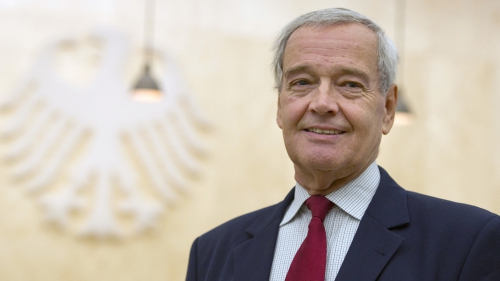


























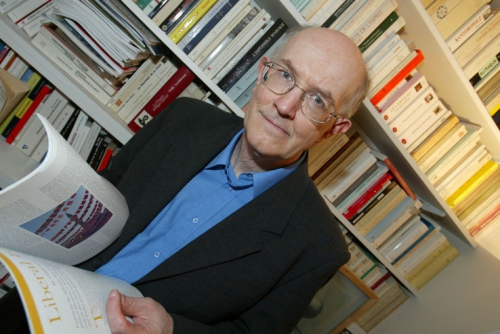





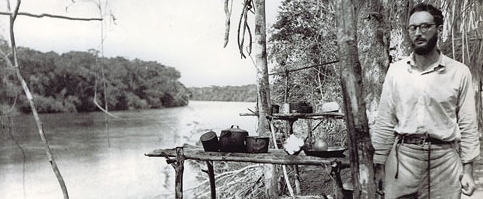



 Professor Tarchi, l'avanzata del populismo sembrava inarrestabile.
Professor Tarchi, l'avanzata del populismo sembrava inarrestabile. 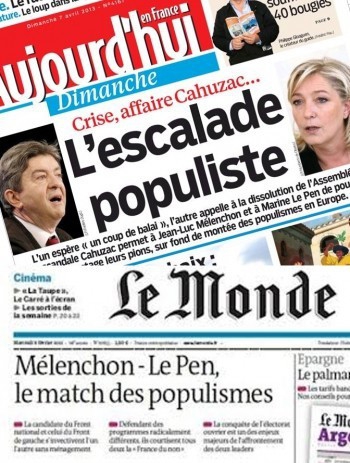 Il momento che sta vivendo l'Europa sembra essere socialmente travagliato. Eppure in Olanda e in Francia, alla fine, ha vinto il moderatismo. Perchè?
Il momento che sta vivendo l'Europa sembra essere socialmente travagliato. Eppure in Olanda e in Francia, alla fine, ha vinto il moderatismo. Perchè?






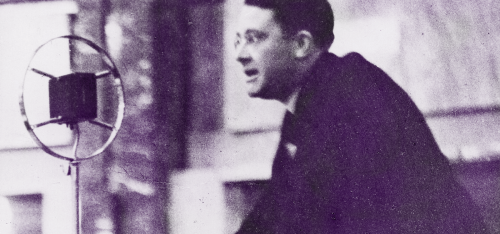


 La tentative échouée de ré-instaurer un ordre sain et véritable n’est sans doute pas pour autant le fait de la méthode choisie par les non-conformistes. C’est bien plutôt la vérification de ce que ce sont les révolutions qui font les véritables révolutionnaires, et non pas les prétendus révolutionnaires qui font les révolutions. Pour autant on peut regretter que la force, la cohérence et le talent de cette génération n’aient pas eu davantage de portée, et qu’elle n’ait pas perduré en tant que telle. Toutes ses tendances ont été éclatées par l’histoire, et respectivement digérées, si ce n’est détournées, par d’autres formations politiques et intellectuelles d’envergure. Mais le regard acéré de cette génération sur un monde agonisant, tout comme le patronage de ses pères spirituels et son attitude circonspecte, survivent. Les non-conformistes des années 1930 auront au moins créé, ou du moins renouvelé, une tradition d’intellectuels dés-engagés, impatients et irrécupérables.
La tentative échouée de ré-instaurer un ordre sain et véritable n’est sans doute pas pour autant le fait de la méthode choisie par les non-conformistes. C’est bien plutôt la vérification de ce que ce sont les révolutions qui font les véritables révolutionnaires, et non pas les prétendus révolutionnaires qui font les révolutions. Pour autant on peut regretter que la force, la cohérence et le talent de cette génération n’aient pas eu davantage de portée, et qu’elle n’ait pas perduré en tant que telle. Toutes ses tendances ont été éclatées par l’histoire, et respectivement digérées, si ce n’est détournées, par d’autres formations politiques et intellectuelles d’envergure. Mais le regard acéré de cette génération sur un monde agonisant, tout comme le patronage de ses pères spirituels et son attitude circonspecte, survivent. Les non-conformistes des années 1930 auront au moins créé, ou du moins renouvelé, une tradition d’intellectuels dés-engagés, impatients et irrécupérables.
 « Je relis un écrivain marxiste émouvant et oublié, Henri Lefebvre, dénonciateur de la vie quotidienne dans le monde moderne. Lefebvre est un bon marxiste antichrétien mais il sent cette force. D’une part l’URSS crée par manque d’ambition politique le même modèle de citoyen petit-bourgeois passif attendant son match et son embouteillage ; d’autre part la société de consommation crée des temps pseudo-cycliques, comme dira Debord et elle fait aussi semblant de réunir, mais dans le séparé, ce qui était jadis la communauté. Lefebvre rend alors un curieux hommage du vice à la vertu ; et il s’efforce alors à plus d’objectivité sur un ton grinçant.
« Je relis un écrivain marxiste émouvant et oublié, Henri Lefebvre, dénonciateur de la vie quotidienne dans le monde moderne. Lefebvre est un bon marxiste antichrétien mais il sent cette force. D’une part l’URSS crée par manque d’ambition politique le même modèle de citoyen petit-bourgeois passif attendant son match et son embouteillage ; d’autre part la société de consommation crée des temps pseudo-cycliques, comme dira Debord et elle fait aussi semblant de réunir, mais dans le séparé, ce qui était jadis la communauté. Lefebvre rend alors un curieux hommage du vice à la vertu ; et il s’efforce alors à plus d’objectivité sur un ton grinçant.
